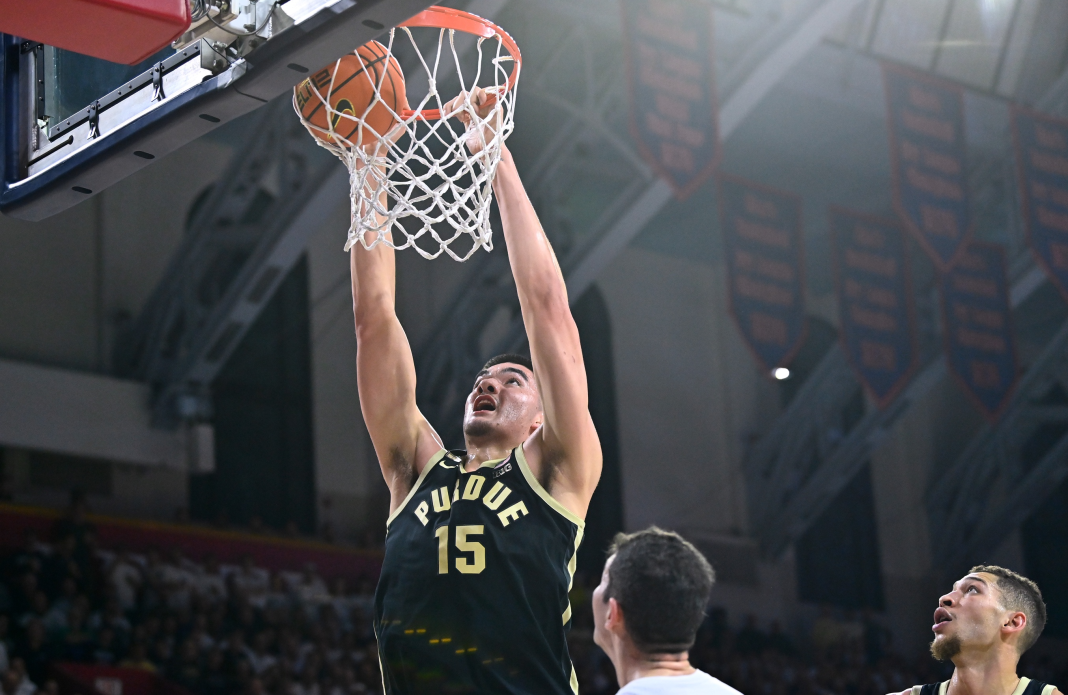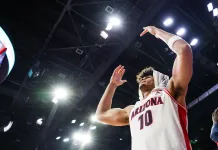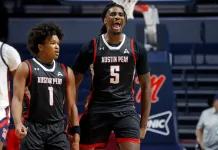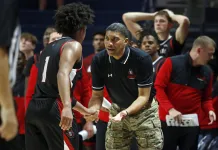Characteristics of Upset Victims, Cinderellas, Final Four, and Championship Teams
Every year, Selection Sunday presents 68 deserving teams the opportunity to begin their quest for college basketball’s most prestigious team honor, an NCAA tournament championship. For many teams, it is simply an honor to see their name called when the brackets are revealed, and winning a game or two would only be icing on the cake. For others, however, the goal is a national title or at least a Final Four berth, and nothing shy of that will do. Of course, there are a bunch of teams that will finish somewhere in between the extremes. What separates these teams? Which of this year’s teams is best setup to make a title run, or alternatively, most vulnerable to getting eliminated early?
What I will be looking at are the shared statistical characteristics of Upset Victims, Cinderellas, Final Four, and Champion teams dating back to 2013 or the last 10 tournament seasons. To do this, I picked out 12 different key statistical categories and four of my own personal Strength Indicators, plus a Combined Average Ranking, and charted the recent qualifying teams by their performances in these categories. Here they are:
Steve Makinen’s Power Rating
Opponent Power Rating (Schedule Strength)
Offensive Points per Game
Defensive Points per Game
Steve Makinen’s Effective Strength Indicator
Steve Makinen’s Bettors’ Rating
Steve Makinen’s Momentum Ratings
Effective Offensive Points per Possession
Effective Defensive Points per Possession
Offensive Field Goal %
Offensive 3PT Field Goal %
Rebounding Percentage
Assist to Turnover Ratio
Offensive Turnovers per Possession
Defensive Turnovers per Possession
Defensive Field Goal %
Combined Average Ranking
After determining the national season ranks for all the Division 1 teams, I pulled the Upset Victims, Cinderellas, Final Four, and Champion teams from the nine tournaments for special analysis. For each stat category, I look for minimum performance, typical national ranking, and the percentile of teams that qualify within certain ranges. As a final exclamation point on the analysis, I take a Combined National Ranking of the 15 sortable categories to separate the more complete teams from the rest.
To summarize the findings, it was determined that the relationship between my Effective Strength Indicator was the most significant of all the categories analyzed. The average of the last 36 Final Four teams ranked 14.2 in the country in that rating. Among the hard-core statistical categories, Effective Offensive Points per Possession has become the most important, with an average Final Four team ranking of 20.0 over the last 10 tournaments, 2.6 spots higher than the same rating for defense. Interestingly, the least important factor was Defensive Turnovers per Possession, or the ability to force turnovers on defense.
First though, a quick reminder of what happened last season in terms of my analysis using the combined rankings. Despite what was an overall bizarre tournament, particularly beyond the first two rounds, the team atop my Champions Qualification Chart actually won the title, Connecticut. The Huskies had 14 out of a possible 17 marks. In terms of the Final Four qualifiers, of course, UConn was second on that chart, and Florida Atlantic was in the top 15 potential advancers.
However, again, it was as strange of a Final Four as we have ever witnessed. On my potential Cinderella teams chart, FAU and Michigan State, both tied for second with 15 marks, while Arkansas, another eventual Cinderella team, was just behind with 14. Finally, on the potential Upset Victims chart, Iowa State and Virginia were each in the upper half of the 24 teams I scored in this metric. The Purdue and Arizona losses were extraordinary. In summary, while it was a relatively crazy bracket in 2023, these metrics still fared relatively well. They are now fixed in the must-do list before completing any brackets or placing any wagers.
Let’s look more closely at each of the qualifying charts I just described in terms of how the teams stack up for 2024.
Shared Traits of Upset Victim Teams
The following is a list of the traits shared by teams that would be considered ‘Upset Victims” or those that were seeded #6 or better and lost their first-round game. In general, I use an 80th-percentile cutoff to eliminate some of the more fluky teams from recent years. These stats include only those obtained as of Selection Sunday and contain no games beyond that point, so they should accurately reflect those you’ll be using when picking this year’s brackets. These were the Upset Victims considered:
2013
#2: GEORGETOWN
#3: NEW MEXICO
#4: KANSAS STATE
#5: OKLAHOMA STATE, UNLV, WISCONSIN
#6: UCLA
2014
#3: DUKE
#5: CINCINNATI, OKLAHOMA, VA COMMONWEALTH
#6: OHIO STATE, MASSACHUSETTS
2015
#3: IOWA STATE, BAYLOR
#6: SMU, PROVIDENCE
2016
#2: MICHIGAN STATE
#3: W VIRGINIA
#4: CALIFORNIA
#5: BAYLOR, PURDUE
#6: SETON HALL, ARIZONA, TEXAS
2017
#5: MINNESOTA
#6: MARYLAND, SMU, CREIGHTON
2018
#1: VIRGINIA
#4: WICHITA STATE
#5: ARIZONA
#6: MIAMI, TCU
2019
#4: KANSAS STATE
#5: MARQUETTE, MISSISSIPPI STATE, WISCONSIN
#6: IOWA STATE
2021
#2: OHIO STATE
#3: TEXAS
#4: PURDUE, VIRGINIA
#5: TENNESSEE
#6: BYU, SAN DIEGO STATE
2022
#2: KENTUCKY
#5: IOWA, CONNECTICUT
#6: ALABAMA, LSU, COLORADO STATE
2023
#1: PURDUE
#2: ARIZONA
#4: VIRGINIA
#6: IOWA ST
Of these last 56 Upset Victims seeded #6 or better, approximately 80% of them:
– Went into the tournament with a Steve Makinen Power Rating of 87 or lower.
– Finished the regular season with a Schedule Strength ranked outside the top 12 nationally.
– Ranked outside the Top 25 in Offensive Points per Game.
– Ranked outside the Top 15 in Defensive Points per Game.
– Had a Steve Makinen Effective Strength Indicator Rating of +17.5 or less and/or ranked outside the Top 10 nationally.
– Had a Steve Makinen Bettors Rating of at most -15 and/or ranked outside the Top 12 nationally.
– Had a Steve Makinen Momentum Rating outside the Top 55 nationally.
– Scored less than 1.235 Effective Points per Possession on offense and/or ranked outside the Top 10 nationally
– Allowed more than 0.900 Effective Points per Possession on defense and/or ranked outside the Top 7 nationally.
– Shot less than 48% from the field on the season, ranking outside the Top 27 nationally in FG%.
– Made less than 38% of their 3PT attempts on the season, placing them outside the Top 34 of all teams.
– Had a Rebounding Percentage Rate of less than 55.2% and ranked outside the Top 12 of the country.
– Had an Assist to Turnover Ratio of less than 1.45, ranking outside the Top 12 nationally.- Ranked outside the country’s 22 top teams in terms of Offensive Turnovers per Possession (approx. 15%).
– Ranked outside the country’s 45 top teams in terms of Defensive Turnovers per Possession (approx. 22%)
– Allowed opponents higher than 39% on field goal attempts, a mark typically not good enough for the Top 16 in the country.
– Had a Combined Average Ranking of 58.0 or worse in all of the analyzed stats.
Using the logic of qualifying all of this year’s 24 teams seeded #6 or better under our criteria above, here is a chart showing the number of times each team qualified for the 17 categories. Based on our belief that the Upset Victims share characteristics, the teams at the top of the list are at the most risk of getting upset in their first-round game.
VIEW UPSET VICTIM QUALIFYING CHART HERE
Shared Traits of Cinderella Teams
The following is a list of the traits shared by teams that could be considered ‘Cinderella Teams,” or those that were seeded #7 or less and won at least two games to reach the Sweet 16. I use an 80th percentile cutoff again to eliminate some of the more fluky teams from recent years. These stats include only those obtained as of Selection Sunday and contain no games beyond that point, so they should accurately reflect those you’ll be using when picking this year’s brackets. These were the Cinderella Teams considered:
2013 OREGON (#12)
2013 LASALLE (#13)
2013 FLA GULF COAST (#15)
2013 WICHITA STATE (#9)
2014 CONNECTICUT (#7)
2014 KENTUCKY (#8)
2014 TENNESSEE (#11)
2014 DAYTON (#11)
2014 STANFORD (#10)
2015 MICHIGAN STATE (#7)
2015 WICHITA STATE (#7)
2015 NC STATE (#8)
2015 UCLA (#11)
2016 GONZAGA (#11)
2016 SYRACUSE (#10)
2017 S CAROLINA (#7)
2017 MICHIGAN (#7)
2017 WISCONSIN (#8)
2017 XAVIER (#11)
2018 FLORIDA STATE (#9)
2018 KANSAS STATE(#9)
2018 LOYOLA-IL (#11)
2018 NEVADA (#7)
2018 SYRACUSE (#11)
2018 TEXAS A&M (#7)
2019 OREGON (#12)
2021 OREGON (#7)
2021 LOYOLA-IL (#8)
2021 UCLA (#11)
2021 SYRACUSE (#11)
2021 OREGON STATE (#12)
2021 ORAL ROBERTS (#15)
2022 NORTH CAROLINA (#8)
2022 MIAMI (#10)
2022 IOWA STATE (#11)
2022 MICHIGAN (#11)
2022 ST PETERS (#15)
2023 MICHIGAN STATE (#7)
2023 ARKANSAS (#8)
2023 FLORIDA ATLANTIC (#9)
2023 PRINCETON (#15)
Of the last 41 Cinderella teams seeded #7 or worse, approximately 80% of them:
– Went into the tournament with a Steve Makinen Power Rating of 80.5 or better.
– Finished the regular season with a Schedule Strength ranked in the top 102 nationally.
– Ranked in the Top 190 in Offensive Points per Game, scoring around 70+ PPG.
– Ranked in the Top 160 in Defensive Points per Game, allowing approximately less than 69 PPG.
– Had a Steve Makinen Effective Strength Indicator Rating of at least +10.0 and/or ranked in the Top 55 nationally.
– Had a Steve Makinen Bettors Rating of at least -7.5 and/or ranked in the Top 56 nationally.
– Had a Steve Makinen Momentum Rating in the Top 110 nationally
– Scored at least 1.120 Effective Points per Possession on offense and ranked in the Top 75 nationally.
– Allowed better than 1.0 Effective Points per Possession on defense and ranked in the Top 80 nationally.
– Shot at least 44.5% from the field on the season, ranking in the Top 135 nationally in FG%.
– Made about 34% of its 3PT attempts on the season, placing them in the Top 215 of all teams.
– Had a Rebounding Percentage Rate of at least 50% and ranked in the Top 160 of the country.
– Had an Assist to Turnover Ratio of at least 1.075, ranking in the Top 135 nationally.
– Ranked in the country’s 200 top teams in terms of Offensive Turnovers per Possession (approx. 18.5%).
– Ranked in the country’s 250 top teams in terms of Defensive Turnovers per Possession (approx. 17%).
– Allowed opponents 43.5% or less on field goal attempts, a mark typically good enough for the Top 160 in the country.
– Had a Combined Average Ranking of 105.0 or better in all of our analyzed stats.
Using the logic of qualifying all of this year’s 44 teams seeded #7 or worse under our criteria above, here is a chart showing the number of times each team qualified for the 17 categories. Based upon our belief that the Cinderella teams share quality characteristics, the teams at the top of the list are most prepared to make an exciting tournament run.
VIEW CINDERELLA QUALIFYING CHART HERE
Shared Traits of Final Four Teams
The following is a list of the traits shared by teams that eventually reached the Final Four. Again, considering an 80th percentile cutoff to eliminate unusual teams from recent years. These were the last 40 Final Four teams:
2013 SYRACUSE (#4)
2013 LOUISVILLE (#1)
2013 MICHIGAN (#4)
2013 WICHITA STATE (#9)
2014 WISCONSIN (#2)
2014 FLORIDA (#1)
2014 KENTUCKY (#8)
2014 CONNECTICUT (#7)
2015 KENTUCKY (#1)
2015 DUKE (#1)
2015 WISCONSIN (#1)
2015 MICHIGAN STATE (#7)
2016 OKLAHOMA (#2)
2016 N CAROLINA (#1)
2016 VILLANOVA (#2)
2016 SYRACUSE (#10)
2017 N CAROLINA (#1)
2017 GONZAGA (#1)
2017 OREGON (#3)
2017 S CAROLINA (#7)
2018 LOYOLA-IL (#11)
2018 KANSAS (#1)
2018 MICHIGAN (#3)
2018 VILLANOVA (#1)
2019 VIRGINIA (#1)
2019 MICHIGAN STATE (#2)
2019 TEXAS TECH (#3)
2019 AUBURN (#5)
2021 GONZAGA (#1)
2021 BAYLOR (#1)
2021 HOUSTON (#2)
2021 UCLA (#11)
2022 KANSAS (#1)
2022 DUKE (#2)
2022 VILLANOVA (#2)
2022 NORTH CAROLINA (#8)
2023 CONNECTICUT (#4)
2023 MIAMI (#5)
2023 SAN DIEGO STATE (#5)
2023 FLORIDA ATLANTIC (#9)
Of the last 40 Final Four teams, approximately 80% of them:
– Went into the tournament with a Steve Makinen Power Rating of 84.5 or higher.
– Finished the regular season with a Schedule Strength ranked in the top 73 nationally.
– Ranked in the Top 110 in Offensive Points Per Game, scoring about 72.5 PPG or more.
– Ranked in the Top 125 in Defensive Points Per Game, allowing about 69 PPG or less.
– Had a Steve Makinen Effective Strength Indicator Rating of at least +17.0 and ranked in the Top 18 nationally.
– Had a Steve Makinen Bettors Rating of at least -11.5 and ranked in the Top 27 nationally.
– Had a Steve Makinen Momentum Rating ranked in the Top 28 nationally.
– Scored at least 1.180 Effective Points per Possession on offense and ranked in the Top 26 nationally.
– Allowed better than 0.970 Effective Points per Possession on defense and ranked in the Top 32 nationally.
– Shot better than 44.5% from the field on the season, ranking in the Top 110 nationally in FG%.
– Made at least 34% of its 3PT attempts on the season, placing them in the Top 160 of all teams.
– Had a Rebounding Percentage Rate of at least 51.5% and ranked in the Top 110 of the country.
– Had an Assist to Turnover Ratio of at least 1.125, ranking in the Top 90 nationally.
– Ranked in the country’s 140 top teams in terms of Offensive Turnovers per Possession.
– Ranked in the country’s 235 top teams in terms of Defensive Turnovers per Possession.
– Allowed opponents about 43% or less on field goal attempts, a mark typically good enough for the Top 115 in the country.
– Had a Combined Average Ranking of 73.0 or better in all of our analyzed stats.
Using the logic of qualifying all of this year’s 68 teams under our criteria above, here is a chart showing the number of times each team qualified for the 17 categories. Based upon our belief that the Final Four teams share quality characteristics, the teams at the top of the list are most prepared to make a deep tournament run to New Orleans.
VIEW FINAL FOUR QUALIFYING CHART HERE
Shared Traits of Tournament Champions
Recent years of tournament action have shown that there is a big difference between reaching the Final Four and winning the title. Typically, only the truly elite teams accomplish the latter. Here’s a look at the minimum requirements for winning a tournament championship over the last 10 tournaments. Just to jog your memory, these are the champions during that time span:
2013 LOUISVILLE (#1)
2014 CONNECTICUT (#7)
2015 DUKE (#1)
2016 VILLANOVA (#2)
2017 N CAROLINA (#1)
2018 VILLANOVA (#1)
2019 VIRGINIA (#1)
2021 BAYLOR (#1)
2022 KANSAS (#1)
2023 CONNECTICUT (#4)
Looking for clear separations in the teams’ stats/ranks of the last 10 NCAA Champions:
– Eight of them entered the tournament with a Steve Makinen Power Rating of 89.5 or higher.
– Eight of them finished the regular season with a Schedule Strength ranked in the top 45 nationally.
– Seven of them ranked in the Top 55 in Offensive Points per Game and scored at least 72 PPG.
– Eight of them ranked in the Top 135 in Defensive Points per Game or allowed less than 70 PPG.
– Nine of them had a Steve Makinen Effective Strength Indicator Rating of at least +18.5 and ranked in the Top 7 nationally.
– Eight of them had a Steve Makinen Bettors Rating of at least -15.5 and ranked in the Top 7 nationally.
– Eight of them had a Steve Makinen Momentum Rating ranked in the Top 8 nationally
– Eight of them scored at least 1.225 Effective Points per Possession on offense and ranked in the Top 15 nationally.
– Eight of them allowed better than 0.955 Effective Points per Possession on defense and ranked in the Top 15 nationally.
– Eight of them shot at least 46% or so from the field on the season, ranking in the Top 70 nationally in FG%.
– Eight of them made at least 35.5% of their 3PT attempts on the season, placing them in the Top 95 of all teams.
– Eight of them had a Rebounding Percentage Rate of at least 52% and ranked in the Top 65 of the country.
– Eight of them had an Assist to Turnover Ratio of at least 1.23, ranking in the Top 45 nationally.
– Eight of them ranked in the country’s 115 top teams in terms of Offensive Turnovers per Possession.
– Seven of them ranked in the country’s 165 top teams in terms of Defensive Turnovers per Possession.
– Eight of them allowed opponents 42.0% or less on field goal attempts, a mark typically good enough for the Top 75 in the country.
– Eight of them had a Combined Average Ranking of 50.0 or better in all of our analyzed stats.
Looking at each of these key categories and every team’s standing as of Sunday (3/12), here is a chart showing the teams most ready for a title run in 2024.
VIEW CHAMPION QUALIFYING CHART HERE
A reminder from recent years on the Potential Champions Chart: Virginia, the 2019 champion and a popular pick of many experts such as yours truly, ranked second of the 68 tournament teams with 15 qualifying marks on this chart. Baylor of 2021 ranked third with 13 marks. Only Michigan and Gonzaga were better. In 2022, Kansas ranked behind six other teams in championship “worthiness” with 11 marks. No team above the Jayhawks even reached the Final Four. And last year, UConn topped the chart with 14 marks.
Each year, it seems to repeatedly prove that it’s a safe bet to say that the eventual Upset Victims, Cinderellas, Final Four teams and Champion will be found at the top of these respective lists. I will be personally investing in this resource again in 2024.






